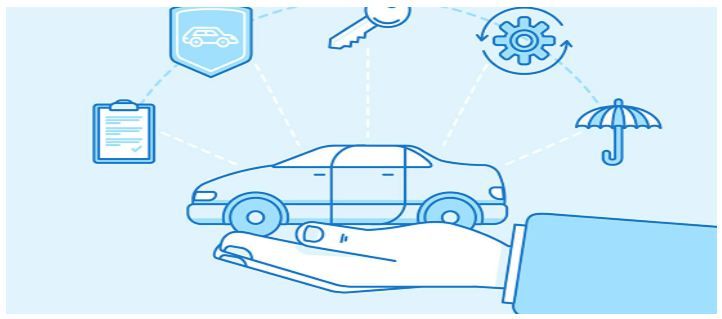Automotive Usage-Based Insurance (Ubi) Market Is Expected To Foresee Significant Growth During The Forecast. North America To Witness The Highest Growth
Author: Vikas Kumar
10 September 2021

Global Automotive Usage-Based Insurance Market is expected to reach the market valuation of US$ 93 billion by 2026 expanding at a reasonable CAGR of 24.39% during the forecast period (2021-2026) from US$ 24.5 billion in 2019. Usage-based Insurance allows insurance carriers to monitor their customer driving habits through a telematics device, resulting to play an integral part in the future of the auto insurance market. Today, the internet and smartphones have changed the way people purchase insurance. Technology has made the insurance ecosystem simple, convenient, and easy.
For a detailed analysis of the Automotive Usage-Based Insurance (UBI) Market browse through https://univdatos.com/report/automotive-usage-based-insurance-market-current-analysis-and-forecast-2020-2026
The various factors driving the automotive usage-based insurance market include the growth of the automobile industry, significant adoption of Mobility as a Service, and growth in the number of connected cars bringing new UBI opportunities. Also, the rapid use of UBI by insurance companies to improve profitability and the growing trend of the Try-Before-You-Buy (TBYB) insurance model is anticipated to boost the market growth. However, data security & privacy concerns and lack of telematics insurance awareness are expected to hinder the growth of the automotive usage-based insurance market.
For a detailed analysis of the market drivers in Automotive Usage-Based Insurance (UBI) Market browse through https://univdatos.com/report/automotive-usage-based-insurance-market-current-analysis-and-forecast-2020-2026
Usage-based insurance (UBI) provides an opportunity for insurers to tailor insurance to customers’ specific behaviors and usage patterns. UBI providers suggest an effective solution has the potential to reduce claims cost by 40%, reduce policy administration by 50%, substantially reduce acquisition cost, and price policies more effectively. Telematics insurance records these and other relevant parameters, through a small device fitted into a car. Consumers who use UBI are given an accumulating discount at each renewal, typically ranging between 5% and 25% off their premium. Drivers can often track their discount online or via the mobile app. UBI is rapidly gaining traction, particularly among young users.
For a detailed analysis of the opportunities in Automotive Usage-Based Insurance (UBI) Market browse through https://univdatos.com/report/automotive-usage-based-insurance-market-current-analysis-and-forecast-2020-2026
Based on the packages, the market is bifurcated into Pay-As-You-Drive (PAYD), Pay-How-You-Drive (PHYD), and Manage-How-You-Drive (MHYD). The PHYD segment dominated the market in 2019 accounting for 69.9% and is anticipated to maintain its dominance during the forecast period. The evolution of PAYD, PHYD, and MHYD models serve as the building blocks of UBI and facilitates the insurance industry to bridge the gap between the insurer and the customer with the introduction of the MHYD model. An increasing number of insurers are starting to launch PHYD or MHYD models all over the world and widespread customer adaptation is seen to improve driver safety by monitoring the driving behavior.
For a detailed analysis of the packages in Automotive Usage-Based Insurance (UBI) Market browse through https://univdatos.com/report/automotive-usage-based-insurance-market-current-analysis-and-forecast-2020-2026
The various technologies utilized in automotive usage-based insurance include onboard diagnostics, smartphones, black boxes, and embedded telematics. The on-board diagnostics dominated the market and accounted for 49.9% in 2019 and is anticipated to maintain its dominance during the analyzed period. However, the embedded telematics segment is expected to grow at the highest CAGR of 28.75% during the forecast period. In 2018, 36 million cars with telematics were sold in comparison to 1.5 million cars with telematics being sold in 2009.
The passenger and commercial vehicles are two major types of vehicles in automotive usage-based insurance. The passenger vehicles dominate the market and generated revenue of US$ 20.2 billion in 2019. The growing sales of passenger vehicles drive the adoption of telematics solutions, enabling insurers to leverage telematics data for evaluating the driver’s behavior, rewards for safe driving, and new insurance policies with reduced insurance premiums.
Request for Sample of the report browse through https://univdatos.com/report/automotive-usage-based-insurance-market-current-analysis-and-forecast-2020-2026
Additionally, the report provides detailed initiatives that are being taken in the field of automotive usage-based insurance. The market is classified into distinct regions including North America (the U.S and Canada), Europe (Germany, France, Spain, Italy, and United Kingdom), Asia-Pacific (China, Japan, India, South Korea, and Australia), and the Rest of the World. North America generated maximum revenue of US$ 10.9 billion in 2019 owing to the increase in the implementation of Mobility-as-a-Service (MaaS) and increasing collaborations among telematics companies and insurance companies in the region. However, the APAC region is expected to witness the highest CAGR growth of 29.78% during the forecast period 2020-2026.
Allstate Insurance Company, Allianz SE, Assicurazioni Generali S.P.A., Sierra Wireless Inc., Octo Telematics, Cambridge Mobile Telematics, TomTom International BV, Vodafone Automotive SpA, Metromile, Inc., AXA are some of the prominent players operating in the global automotive usage-based insurance market. Several M&A’s along with partnerships have been undertaken by these players to develop automotive usage-based insurance.
Global Automotive Usage-Based Insurance Market Segmentation
Market Insight, by Package
- Pay-As-You-Drive (PAYD)
- Pay-How-You-Drive (PHYD)
- Manage-How-You-Drive (MHYD)
Market Insight, by Technology
- On-Board Diagnostics (OBD)
- Smartphone
- Black Box
- Embedded Telematics
Market Insight, by Vehicle-Type
- Passenger vehicles
- Commercial vehicles
Market Insight, by Region
- North America
- United States
- Canada
- Rest of North America
- Europe
- France
- Germany
- Italy
- United Kingdom
- Rest of Europe
- Asia-Pacific
- China
- Japan
- India
- Australia
- Rest of Asia-Pacific
- Rest of World
Top Company Profiles
- Allstate Corporation
- Allianz SE
- Assicurazioni Generali S.P.A.
- AXA
- Cambridge Mobile Telematics
- Metromile
- Octo Telematics
- Sierra Wireless
- TomTom International BV
- Vodafone Automotive SpA
Get a call back
